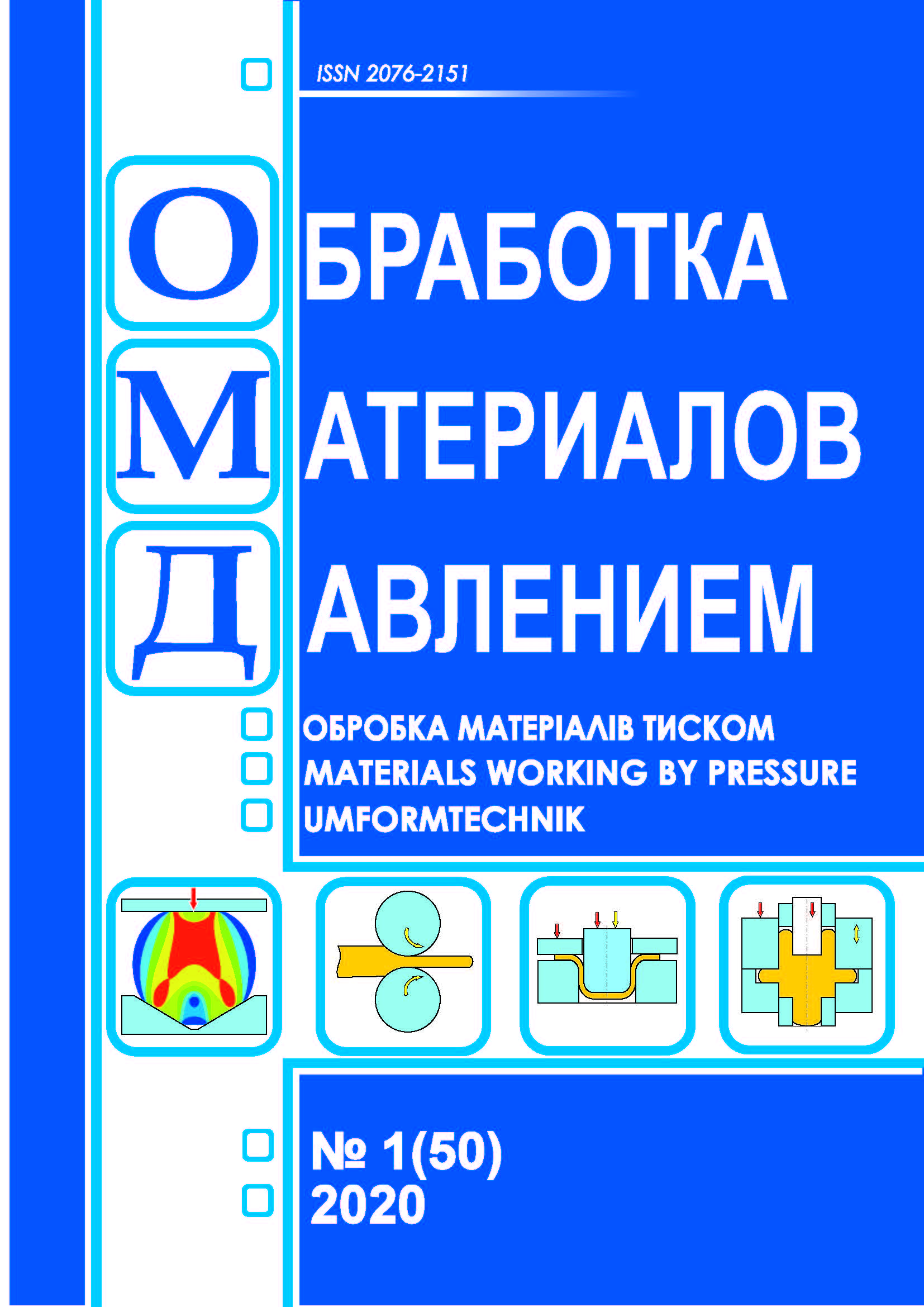Experimental study of the process of bending sheets on a roller machine
DOI:
https://doi.org/10.37142/2076-2151/2020-1(50)243Keywords:
roller bending machine, sheet bending, experimental studies of bending, finite element model, analytical model of sheet bending, working rollers, technological settings, residual curvature.Abstract
Gribkov E. P., Kulik A. N., Hurkovskaya S. S., Zubkov V. S. Experimental study of the process of bending sheets on a roller machine. Material working by pressure. 2020. № 1 (50). P. 243-248.
The problem of specifying the technological modes of production of wheel rims on roller machines has been set and solved. For this, experimental studies of the resulting geometric characteristics, as well as the forces during bending, were carried out on a laboratory experimental 3-roller plate bending machine. In the course of the experiment, billets with a cross section of 2.5 × 200 mm and a length of 1000 mm with various overlap of the middle roller were subjected to molding to study the issue associated with its effect on the residual curvature and forces of the bending process. To analyze the stress-strain state of the metal during its bending on three-roll symmetric bending machines, a calculation was performed using the finite element method in the Abaqus system. The paper presents the calculated distributions of the main components of the stress-strain state of the metal over the height of the cross-section of the sheet subjected to bending. The distributions of equivalent stresses and bending forces in the finite element calculation are presented in graphical form in the form of a volumetric deformed model. The data obtained confirm the validity of experimental studies. As a result of the experimental process of bending on a laboratory machine 100 × 105 × 250, empirical dependences of the radius of the residual curvature of the sheet on the technological settings of the machine were obtained. Comparison of the results obtained with the results of the developed finite element and numerical analytical model showed satisfactory convergence of the results, while the Fisher criterion when comparing the results of experiments and the numerical analytical model was 0.949, and when comparing experiments and the finite element model - 0.931, which confirms the possibility of using both analytical and finite element models for improving the processes of bending sheet metal on a roller bending machine.

